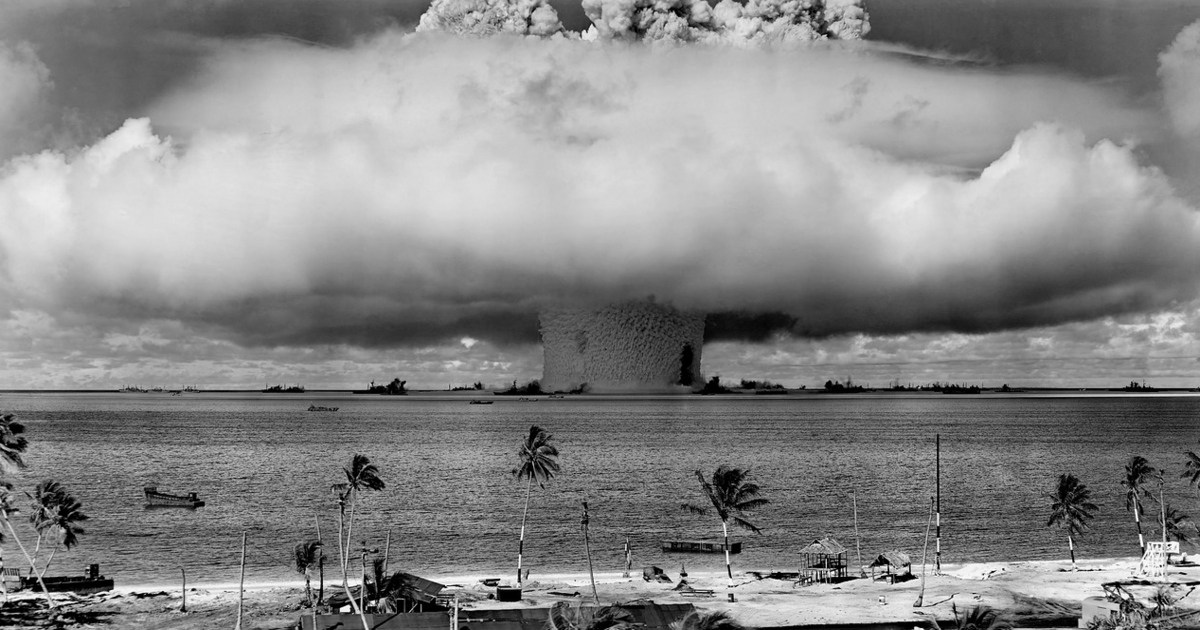The Narrowing Gap Between Nuclear and Conventional Weapons
Is Russia in breach of the 1986 INF Treaty on Intermediate-Range Nuclear Forces, agreed by Reagan and Gorbachev? This would be dangerous.
February 21, 2018

In case you haven’t noticed: The nuclear arms issue is back, in its strategic rather than its tactical or battlefield dimension.
That’s true not only in North Korea, but in Russia as well. It has deployed Iskander missiles (known as SS-26 in NATO-speak) in the enclave (some call it an exclave) of Kaliningrad, the capital of which is the former Königsberg of Immanuel Kant.
These missiles are capable of carrying nuclear payloads (whether they do in fact carry them is unknown). Russia made its move in response to the deployment of 4,500 allied troops in Poland and the Baltic states.
If the Kaliningrad-based Iskander missiles are armed with nuclear warheads, Russia would be in breach of the 1986 INF Treaty on Intermediate-Range Nuclear Forces agreed by Reagan and Gorbachev. This is dangerous.
The Nuclear Posture Review
For its part, the Trump Administration has published a new nuclear doctrine (a “Nuclear Posture Review”) to renew its arsenal. The U.S. move is especially intended to allow for lighter payloads (although greater than at Hiroshima).
The underlying idea is that this could make them “more usable,” or at least more ”thinkable.” Hitting the nail on the head as usual, Harvard University’s Stephen Walt argues that the Pentagon is answering “questions that nobody should be asking.”
The modernization of the U.S. nuclear arsenal essentially comes in response not to North Korea, but to Russia and China’s modernization of their nuclear weapons. It notably did not start with Trump, but with Obama.
Obama’s move was all the more telling as his prematurely being awarded the Nobel Peace Prize included being heralded for being the first U.S. President to advocate a “world without nuclear weapons.”
But at the end of his two terms in office, as I noted at the time, Obama launched a program to overhaul the arsenal, admittedly bringing down total numbers. The notion of favoring less potent nuclear arms also dates back a long way.
“Mad Dog” Mattis
The current U.S. Defense Secretary, Jim Mattis, goes much further in his new doctrine. Contrary to the Obama Administration, which had scrapped them, he advocates the reintroduction of updated sea-launched cruise missiles loaded with nuclear warheads.
“Mad Dog” Mattis proposes respecting the terms of the 2010 START III Treaty, although it has not yet been ratified. That Treaty was the last major arms control agreement between Russia and the United States prior to the cooling of relations that followed the annexation of Crimea and the war in Ukraine.
START III, which Moscow also adheres to, limits both sides to 1,500 nuclear warheads. This is far fewer than in the Cold War, but enough to destroy the world many times over.
However, it remains to be seen whether the two powers will be capable of reaching a new agreement when the current one expires in 2021. They are not working on it. The United States continues to respect the treaty that bans nuclear testing, although it too has never been ratified.
“Clarifying” the situation
The new nuclear strategy involves a modernization of the arsenal. According to its authors, the doctrine simply “clarifies” the situation. “Our goal is to convince adversaries that they have nothing to gain and everything to lose from the use of nuclear weapons,” Mattis declared at the presentation of the review.
But it may signal a major change, because it also means that such adversaries “must understand that there are no possible benefits from non-nuclear aggression or limited nuclear escalation.”
Above all, the new U.S. nuclear doctrine calls for the development of smaller weapons and a “flexible, tailored” strategy of nuclear deterrence to have all possible options available in an escalation. In “extreme circumstances” that may lead to the use of these weapons to defend the vital interests of the United States, its allies or its partners, even in the face of “significant non-nuclear strategic attacks.”
In other words, it broadens the scenarios in which the United States may use nuclear arms, including that of nuclear against non-nuclear (which was, lest it be forgotten, at the root of the Cold War in Europe).
The document advocates strengthening “the integration of nuclear and non-nuclear military planning.” There is a danger of trivializing these weapons — especially when, as the review itself says, there is “an unprecedented range and mix of threats, including major conventional, chemical, biological, nuclear, space and cyber threats, and violent non-state actors.”
Deterrence in a very different guise
Deterrence continues to be the rule, albeit in a very different guise. It is no longer a matter of two sides, but rather three or more, including non-state actors. While nuclear weapons would not deter terrorists of the Islamic State variety or others, the fear of nuclear terrorism of some sort is ever present.
The fact is that the boundary between the nuclear and the non-nuclear is blurred by this doctrine. It is also being blurred in another way: With the building of the increasingly powerful conventional bombs being developed by the United States (as well as Russia and China), such as the so-called hypersonic weapons.
The United States used what it dubbed the “mother of all bombs,” its largest conventional weapon, launched from an airplane, the GBU-43/B Massive Ordnance Air Blast (MOAB), in Afghanistan in April 2017 against a network of Islamic State tunnels in the province of Nangarhar.
In other words, nuclear weapons are downsizing while their conventional counterparts become ever-more powerful.
“Let it be an arms race!” Trump proclaimed during his election campaign. There is just such a race, again, in the nuclear domain, without even counting the new proliferators such as North Korea.
Nuclear weapons cannot be uninvented, but they can be reinvented. And it seems that this is what we face: Not the prospect of a quantitative race this time, but rather a qualitative race, one that corrodes the boundaries between the nuclear and the non-nuclear.
Editor’s Note: Adapted from Andres Ortega’s Global Spectator column, which he writes for the Elcano Royal Institute.
Takeaways
Is Russia in breach of the 1986 INF Treaty on Intermediate-Range Nuclear Forces, agreed by Reagan and Gorbachev? This would be dangerous.
In case you haven’t noticed: The nuclear arms issue is back, in its strategic rather than its tactical or battlefield dimension.
The Trump Administration has published a Nuclear Posture Review to renew its arsenal. This could make them more usable, or at least more thinkable.
The boundary between the nuclear and the non-nuclear is blurred by the Nuclear Posture Review.
